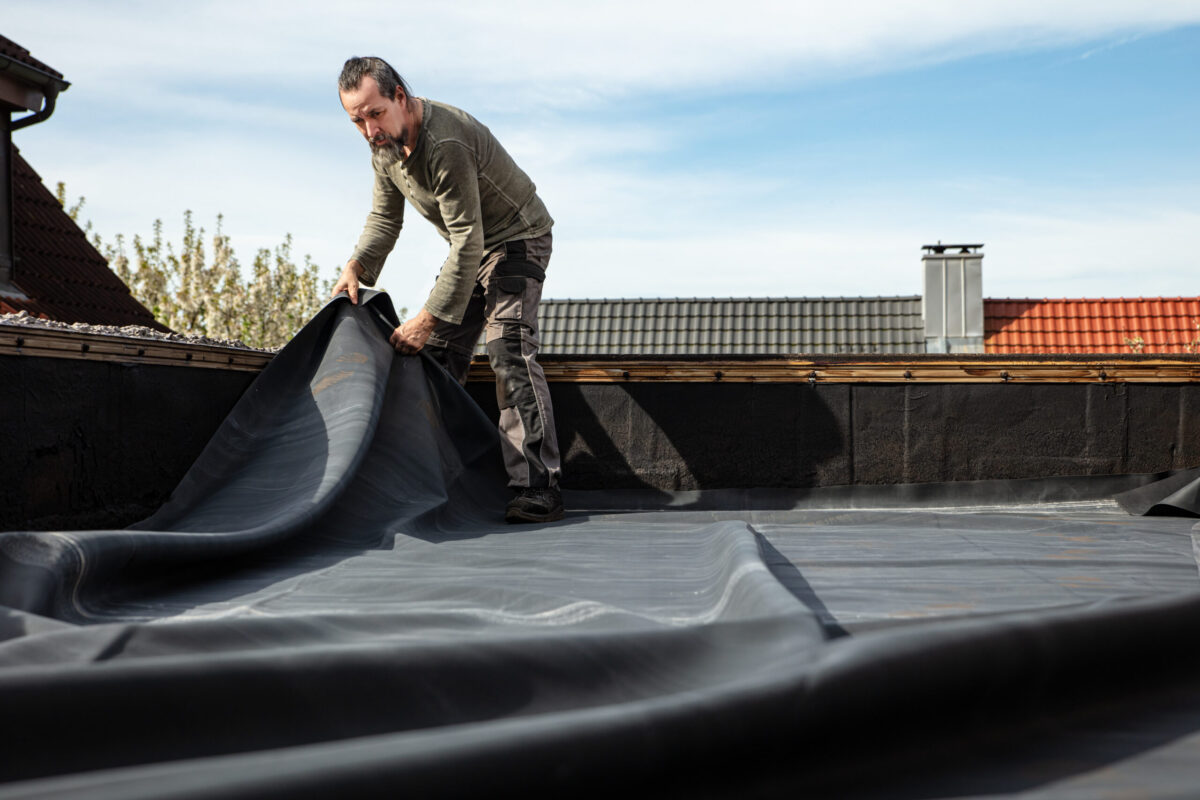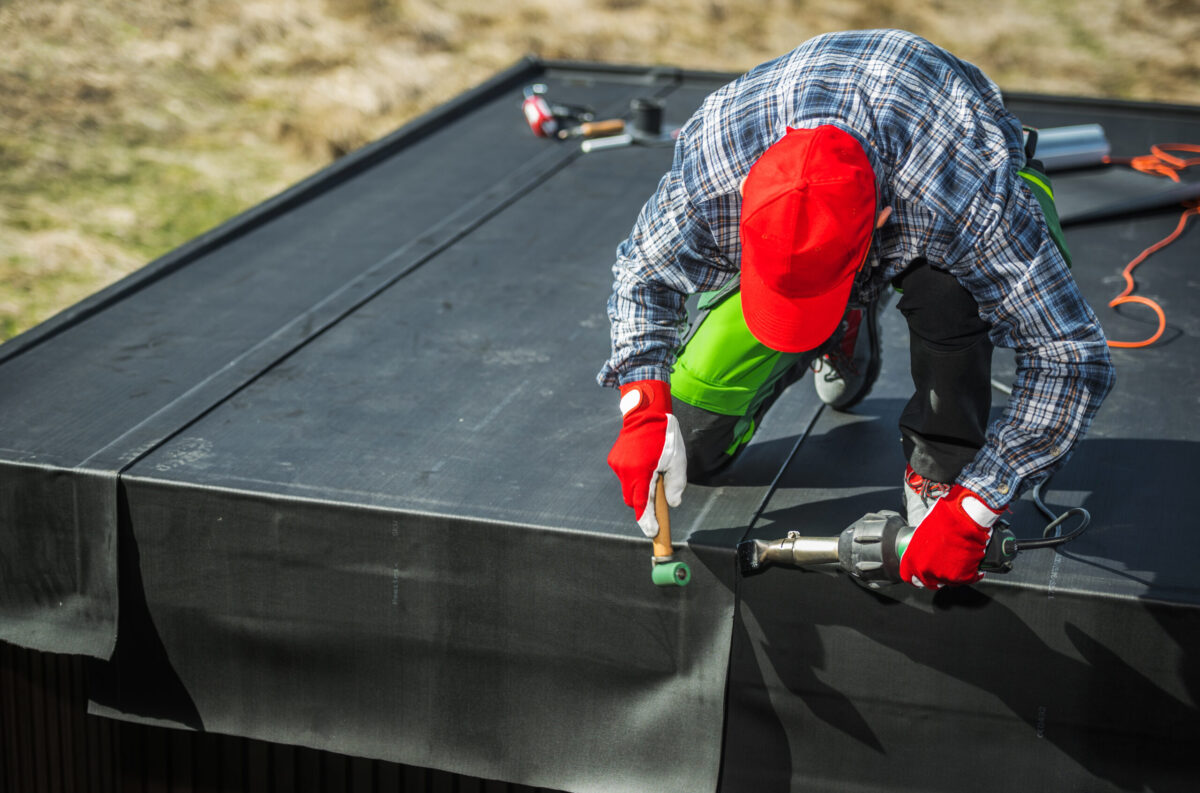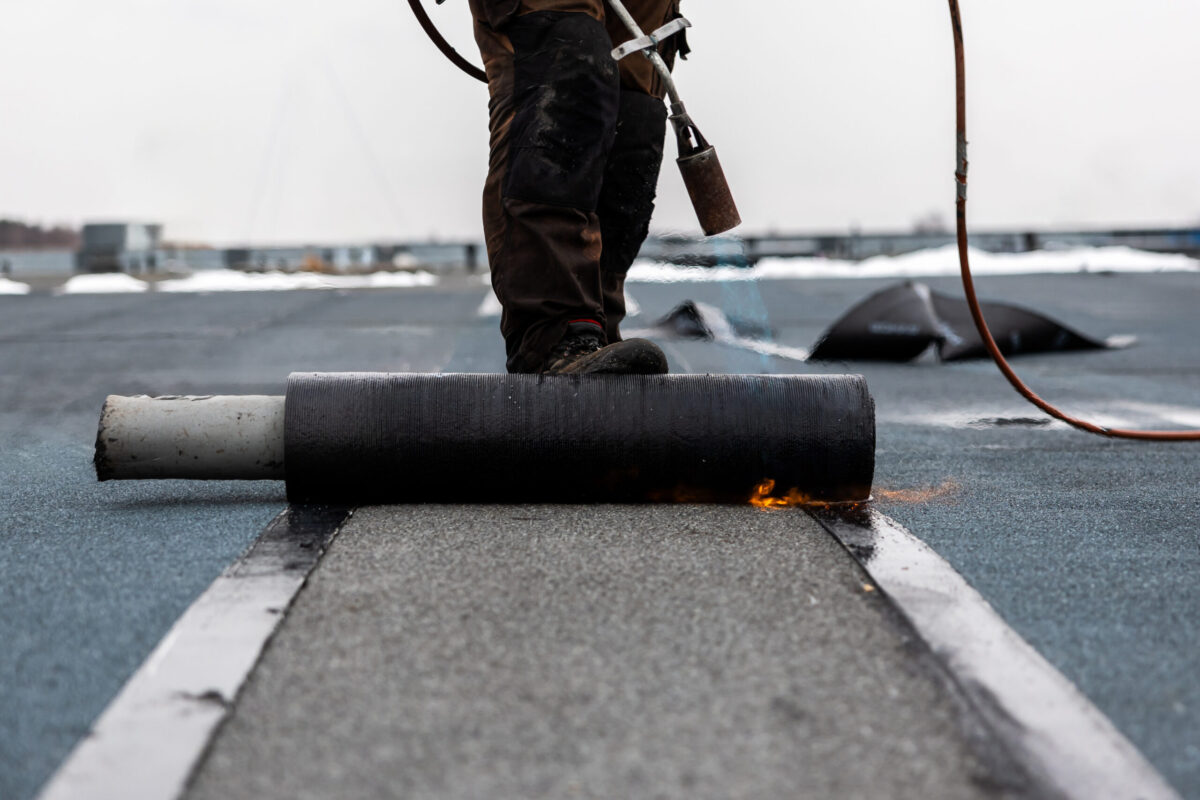Commercial building owners face numerous decisions when it comes to maintaining their properties, and roofing is one of the most critical investments they’ll make. Understanding how long does a rubber roof last can help you make informed decisions about your commercial roofing needs and budget for future replacements or repairs.
Rubber roofing, also known as EPDM (Ethylene Propylene Diene Monomer), has become increasingly popular for commercial buildings due to its durability and cost-effectiveness. If you’re considering a rubber roof installation or need commercial roofing services, knowing the expected lifespan can help you plan your property maintenance strategy effectively.
This comprehensive guide will cover:
- The typical lifespan of rubber roofing systems
- Factors that influence rubber roof longevity
- Signs that indicate your rubber roof needs attention
- Maintenance tips to extend your roof’s life
- When to consider replacement versus repair
🏢 Why Rubber Roof Lifespan Is Important

Understanding your rubber roof’s expected lifespan helps you make smart financial decisions for your commercial property. Knowing when to budget for repairs or replacement prevents unexpected expenses that could impact your business operations.
Rubber roofing offers several advantages that make lifespan considerations particularly important:
- Cost-effective maintenance: Longer-lasting roofs reduce frequent replacement costs
- Business continuity: Predictable roof performance prevents disruptions to your operations
- Energy efficiency: Well-maintained rubber roofs provide consistent insulation properties
- Property value: A roof in good condition maintains your building’s market value
- Insurance benefits: Some insurers offer better rates for buildings with newer, durable roofing systems
📊 How Long Does a Rubber Roof Actually Last?

Most rubber roofs can be expected to last between 15 to 25 years with proper installation and maintenance. However, several factors influence this timeframe, and some high-quality systems can exceed these expectations.
1. Standard Lifespan Expectations
A properly installed rubber roof typically provides reliable protection for 20 years on average. This assumes regular maintenance, proper installation, and exposure to reasonable weather conditions, without excessive wear and tear.
- Quality installation by certified professionals: The longevity of a rubber roof heavily depends on the expertise of the installer. Poorly installed roofs may develop issues such as leaks, improper seaming, or inadequate drainage, significantly reducing their lifespan. Certified professionals follow industry standards, ensuring the roof performs as expected.
- Premium EPDM materials: Using high-quality EPDM (Ethylene Propylene Diene Monomer) materials can make a big difference. These premium materials are designed to resist UV rays, temperature fluctuations, and general wear. Many manufacturers also back their products with extended warranties, giving you peace of mind for years to come.
2. Factors That Extend Roof Life
Several key factors can help your rubber roof reach or even exceed its expected lifespan. Everything from the environment your roof is exposed to, to the maintenance practices you follow, plays a role in determining its overall performance and durability.
- Climate considerations: Rubber roofs perform best in moderate climates with minimal exposure to extreme weather patterns. Consistent exposure to heavy UV radiation, freezing temperatures, or frequent hail can shorten its lifespan. In milder climates, the roof remains more stable over time.
- Professional installation: Properly trained and experienced installers ensure the roof is laid with precision. They use techniques like accurate seaming, effective drainage layouts, and secure flashing installations, which protect the roof from damage and water intrusion. Professional installation reduces the risk of premature wear caused by construction errors.
3. High-Performance Systems
While standard rubber roofs last around 20 years, high-performance systems are engineered to last 30 years or more. These systems incorporate advanced materials and techniques to handle more challenging environments and provide superior durability.
- Reinforced EPDM: Reinforced membranes are thicker and often include a fabric backing that improves tensile strength and puncture resistance. These systems are particularly effective for high-traffic areas or roofs exposed to extreme weather conditions.
- Ballasted systems: A ballasted system involves placing gravel or pavers over the membrane, which protects it from UV exposure, wind lift, and other environmental factors. This added layer of protection helps maintain the roof’s integrity over extended periods without causing additional stress to the material.
4. Warning Signs of Aging
Recognizing the early warning signs of a deteriorating rubber roof allows you to address small problems before they turn into costly repairs or complete replacements. Regular inspections are key to identifying these issues promptly.
- Membrane shrinkage: Over time, the rubber membrane may shrink, particularly around edges or penetrations like vents and chimneys. This can cause the material to pull away from these areas, leaving them vulnerable to leaks or damage.
- Seam separation: Seams that were once tightly sealed may begin to separate due to weathering, improper installation, or adhesive failure. These gaps can allow water to penetrate the roof, leading to moisture buildup and structural issues if not addressed.
5. Maintenance Impact on Longevity
Regular maintenance is one of the best ways to extend the lifespan of your rubber roof. By addressing minor issues early and ensuring the roof remains in good condition, you can prevent costly problems and enjoy reliable performance for years to come.
- Annual inspections: Scheduling annual professional inspections helps detect issues such as small tears, loose seams, and drainage blockages before they worsen. Inspectors can also check for signs of UV damage, debris buildup, or membrane wear that may not be immediately visible.
- Prompt repairs: Even minor damage, like small punctures or loose flashing, can compromise the roof’s effectiveness over time. Promptly repairing these problems prevents further deterioration, such as water infiltration or membrane failure, and ensures the entire system remains intact.
🔧 Essential Maintenance for Maximum Rubber Roof Life

Proper maintenance is the key to getting the most years from your rubber roofing investment. A well-maintained rubber roof can easily reach the upper end of its expected lifespan and sometimes beyond.
Regular Inspection Schedule
Commercial rubber roofs should be professionally inspected at least twice yearly, typically in spring and fall. These inspections help identify potential issues before they become major problems.
Spring Inspections Focus On:
- Winter damage assessment
- Drainage system clearing
- Seam integrity checks
Fall Inspections Address:
- Summer heat damage evaluation
- Preparation for winter weather
- Membrane flexibility assessment
Cleaning and Debris Removal
Keeping your rubber roof clean prevents premature aging and maintains its protective properties. Regular cleaning also allows for better inspection of the membrane surface.
Monthly Cleaning Tasks:
- Remove leaves, branches, and other debris
- Clear drainage areas and gutters
- Check for standing water issues
Professional Maintenance Services
While property owners can handle basic cleaning, professional maintenance ensures comprehensive care. Experienced technicians can identify subtle signs of wear that untrained eyes might miss.
Professional services typically include detailed membrane inspections, seam testing, and preventive treatments that extend roof life. Many commercial roofing companies offer maintenance programs that provide regular service at predictable costs.
🎯 Maximizing Your Rubber Roof Investment
Understanding how long your rubber roof will last helps you make the most of this significant investment. With proper care and attention, you can ensure your commercial building stays protected for decades to come.
Regular maintenance, prompt repairs, and professional inspections are your best tools for extending roof life. When you invest in quality installation and ongoing care, you’re protecting not just your building, but your business operations and bottom line.
Ready to ensure your rubber roof reaches its maximum lifespan? Contact our commercial roofing experts today for a comprehensive inspection and maintenance plan tailored to your property’s needs.
